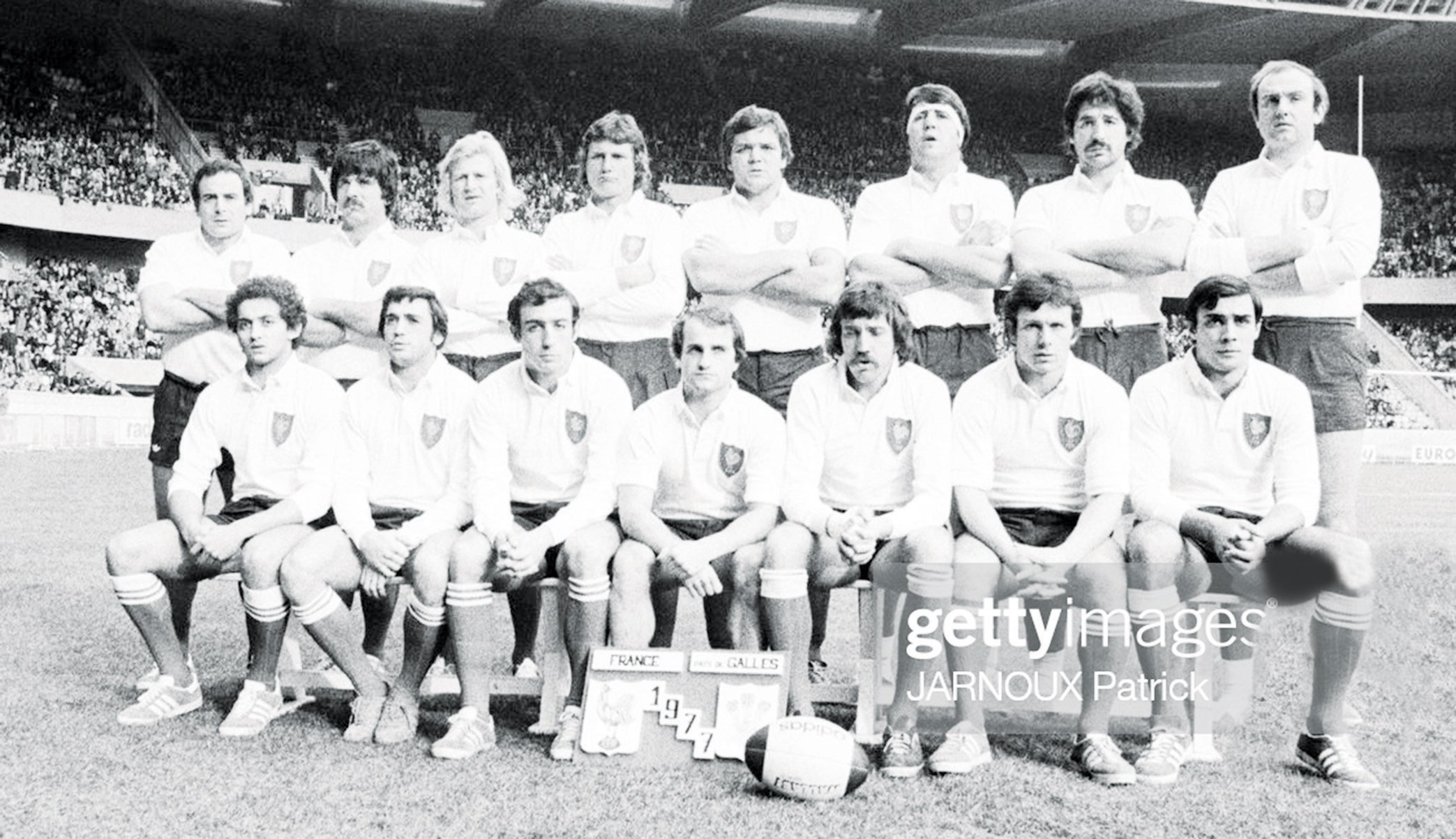French mean machine generate masterpiece

Brendan Gallagher delves into some of rugby’s most enduring images, their story and why they are still so impactful
Iconic Rugby Pictures: PART 39
France line up for ‘Grand Slam decider’ with Wales February 5, 1977
What’s happening here?
It’s February 5, 1977, half an hour before kick off at a packed Parc des Prince and Les Blues have assembled for their traditional pre-match team photograph. But this isn’t any ordinary French team, it is possibly their strongest ever side, certainly the meanest and most intimidating team they have ever fielded. They are about to play Wales and although this is their opening game of the Five Nations – and Wales’ second – everybody in the rugby world knows this is the Grand Slam decider.
What is the story behind the picture?
acute, as was to be expected among two of the greatest sides the game has ever seen. In terms of the Five Nations, Wales held sway with three Grand Slams to France’s one though this France team of 1977 was essentially the side that also won the 1981 Grand Slam. The French also point to three victories over the All Blacks during the Seventies while the great Wales team of that era didn’t manage one. However you score it their constant tussle for bragging rights was the main narrative of European rugby.
The season before, 1976, Wales had gloriously marched to possibly their best Grand Slam under the captaincy of Mervyn Davies with their 19-13 win over France in Cardiff the key clash. Twelve months on the two combatants girded their loins again although, alas, Davies was absent, having been forced to retire with a brain haemorrhage.
What happened next?
Team pictures are part of rugby’s tradition – they hang on our clubhouse walls and help illustrate numerous books but this one is a bit special in both style, content, context and setting. This is a team manifestly used to being photographed, who are comfortable with their greatness and also want the picture to look just right. Like a medieval religious painting it sends out subliminal messages. This, consciously or not, is a work of art.
The team is divided into forwards – in the back row – and backs in the front row. Pointedly none of the six replacements are included – this is L’Equipe de France, the creme de la creme. Not one replacement got on for a single minute in France’s 1977 Championship. The six on the replacements bench were the six who were not good enough to make the team. No touchy feely calling them finishers back in those days.
“None of the replacements are included… No touchy feely calling them finishers back in those days”
If you scan the back row, left to right, the forwards line up in perfect ascending order height wise. This is a tradition that the French national team started and was then replicated by the club teams of the era who did likewise. The front row is tricky because the skipper Jacques Fouroux -who tradition dictates must be seated in the centre – is the smallest player in Test rugby at the time so the rest of his back division sat either side of him in descending height order.
Everybody in the picture is subservient to the diminutive Fouroux, who despite his stature is the giant of French rugby, the tyrant Napoleonic figure who cracked the whip and moved his forwards around like platoons and divisions on the battlefield.
There is more. They are all wearing trainers, not boots, with most of them seemingly from the same sponsor. Being an amateur rugby player in France was a very lucrative business! They are also wearing trainers of course because in those days there were no on-field warmups. Teams stretched in the changing rooms, did press ups, ran on the spot or sprinted up and down corridors. Perhaps that’s why when they finally emerged for the game there was such an explosion of pent-up fury, energy and occasional violence in the opening exchanges. They weren’t blowing hard from the 40-minute warm-up everybody goes in for these days.
And look at the perfect pitch, more usually employed as a football pitch. Just think back to the muddy morasses that Cardiff and Dublin could become after heavy rain and the overlong grass at Twickenham that acted like a deep pile rug. There are many reasons why France produced such vivid passages of rugby in the 70s and 80s and one of them surely is the near perfect condition of their Parc des Prince pitch.
For you trivia buffs the action from this match and footage of Wales supporters in and around the stadium and on tour in Paris were used as the backdrop for the cult TV film/comedy Grand Slamwhich featured Windsor Davies and Hugh Griffiths.
Footnote: How many of the French team could you name? Back row (from left): Alain Paco, Robert Paperamborde, Jean Pierre Rives, Jean Claude Skrela, Gerald Cholley, Jean Francois Imbernon, Jean Michel Palmie, Jean Pierre Bastiat. Front row (from left: Dominique Harize , Roand Bertranne, Jean Michel Aguirre, Jacques Fouroux, Jean Pierre Romeau, Francois Sangalli, Jean Luc Averous.